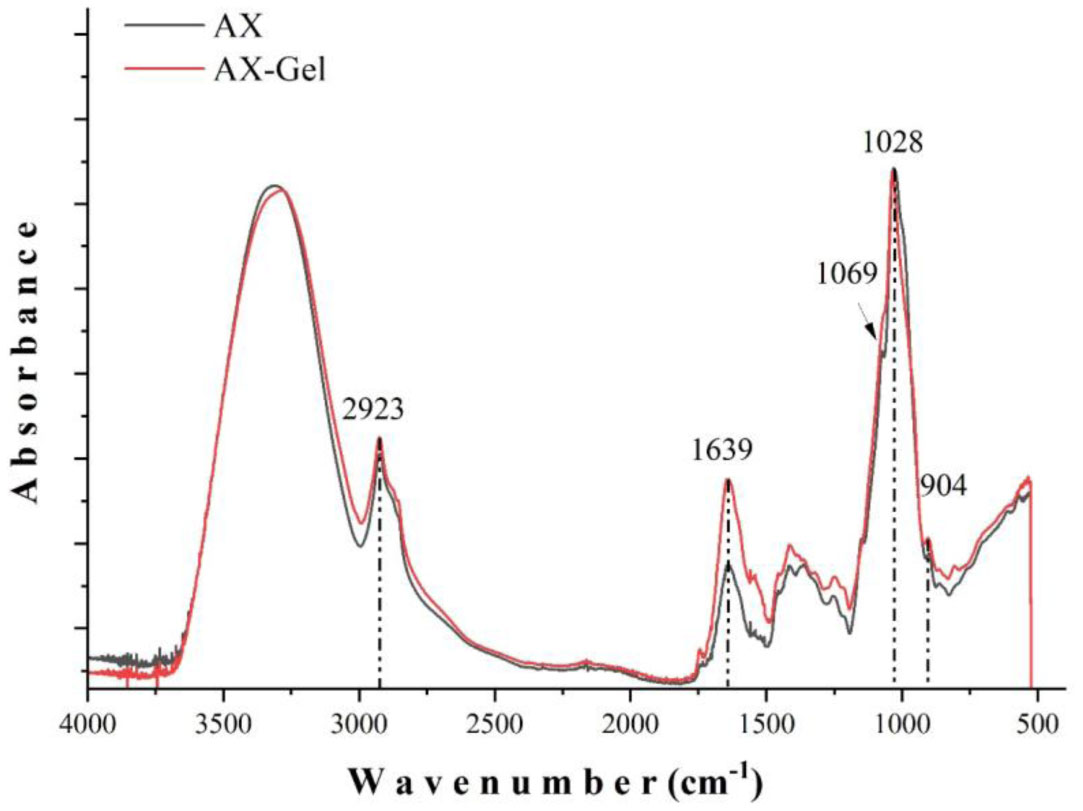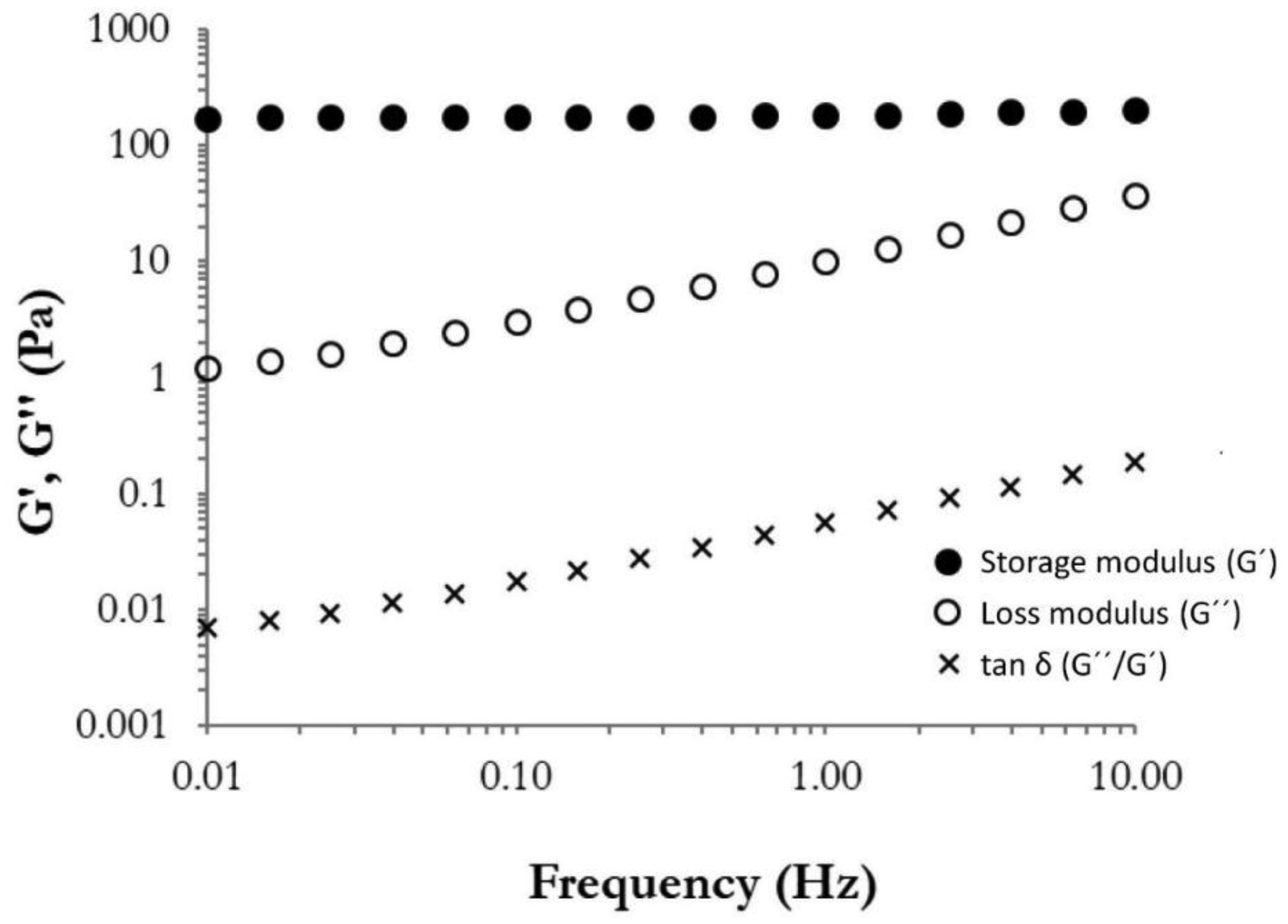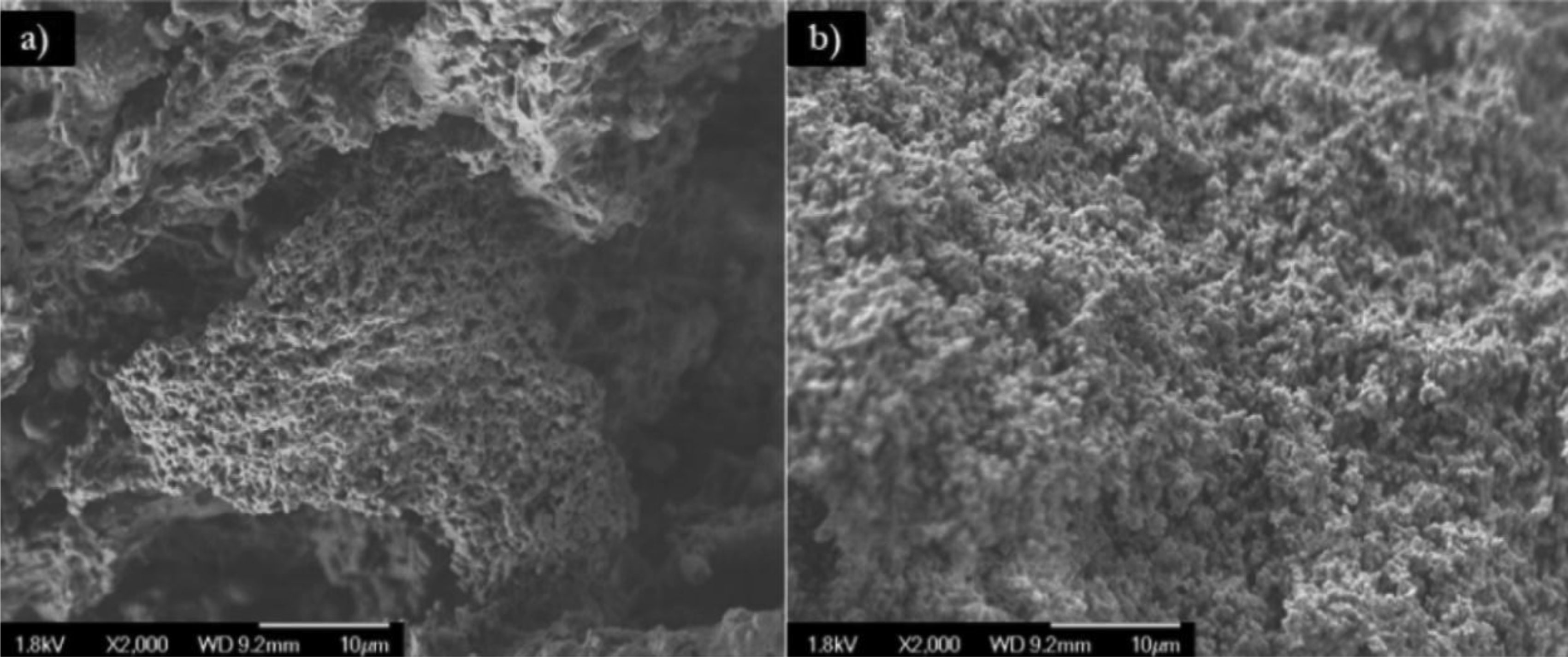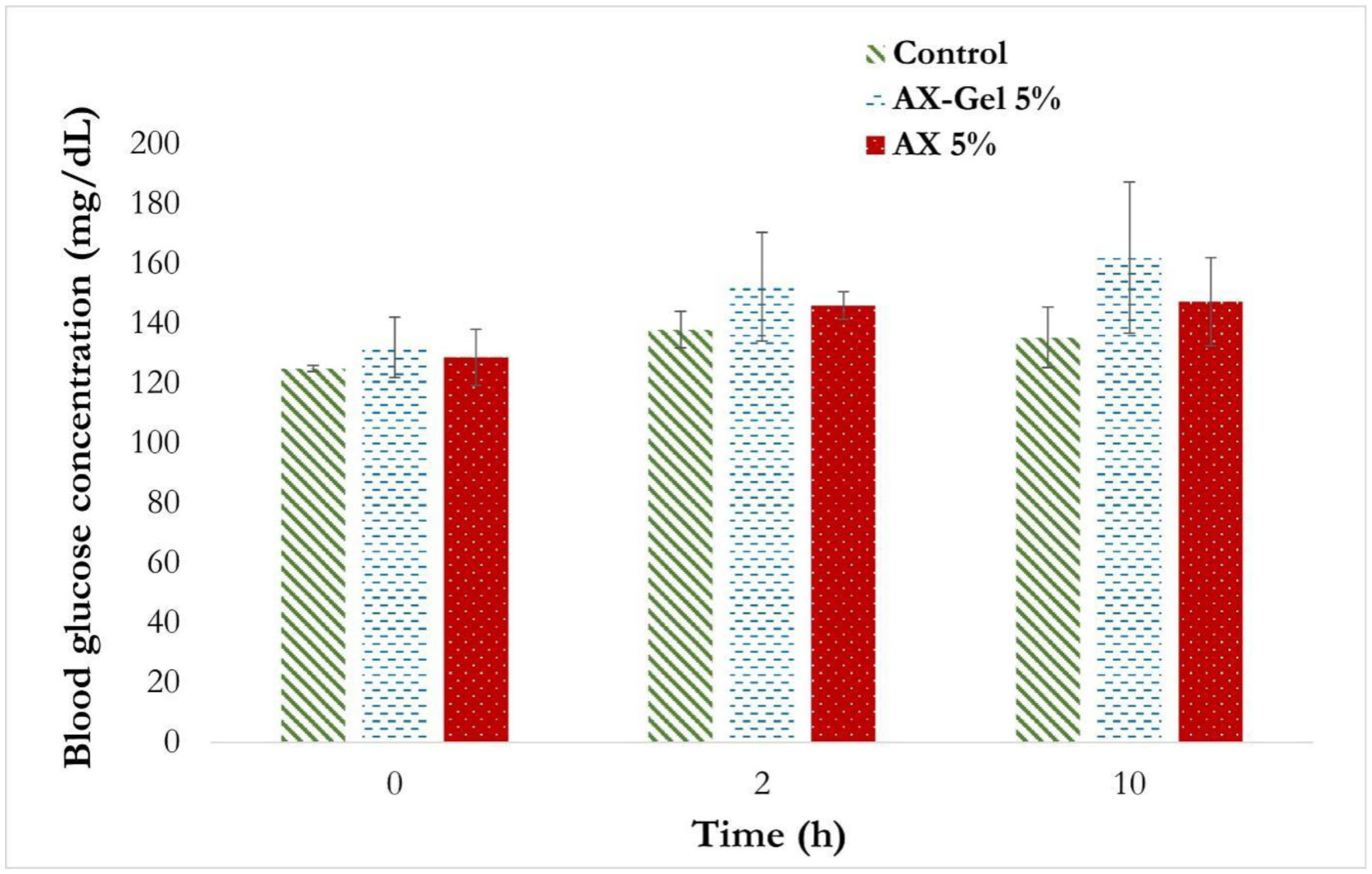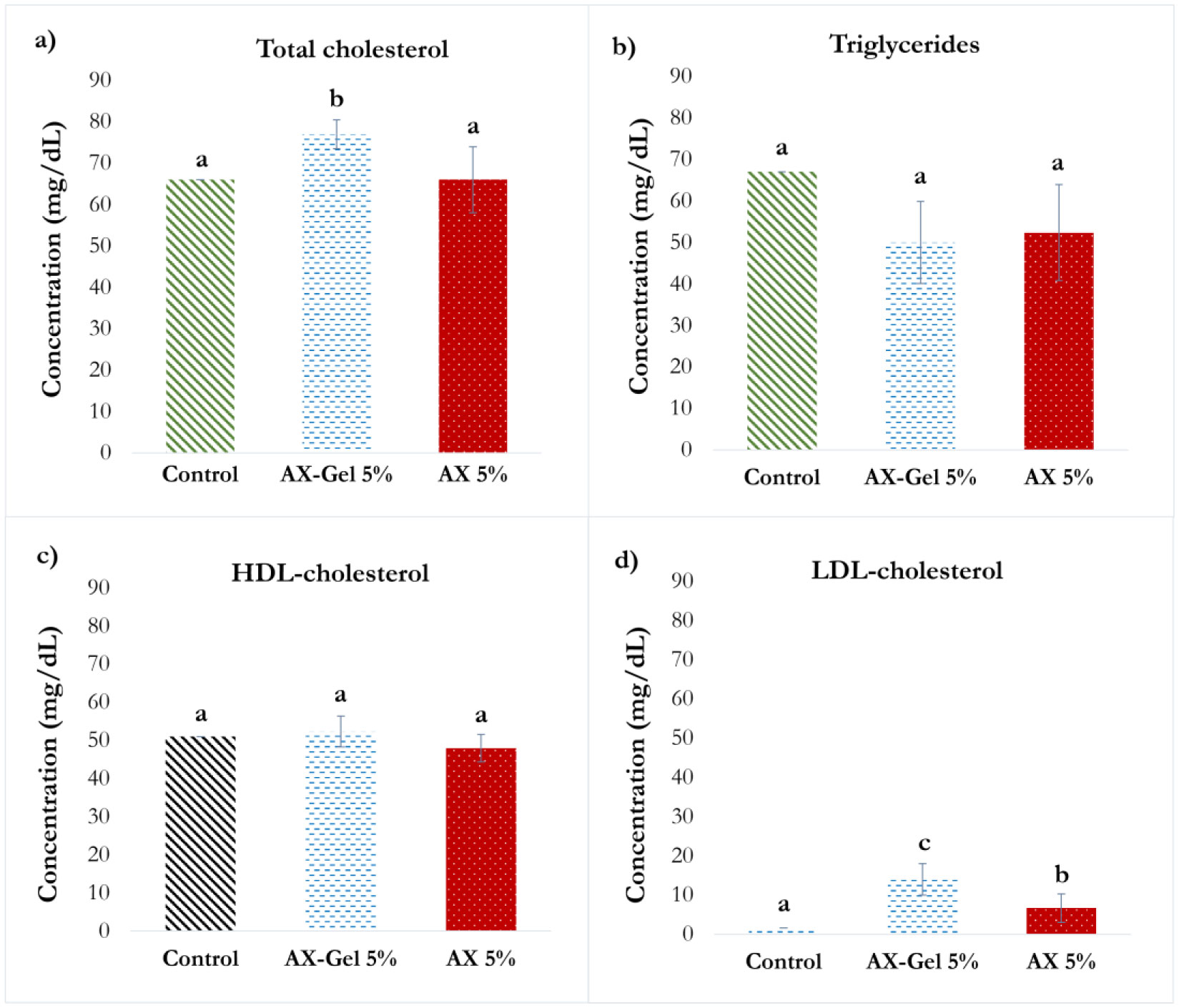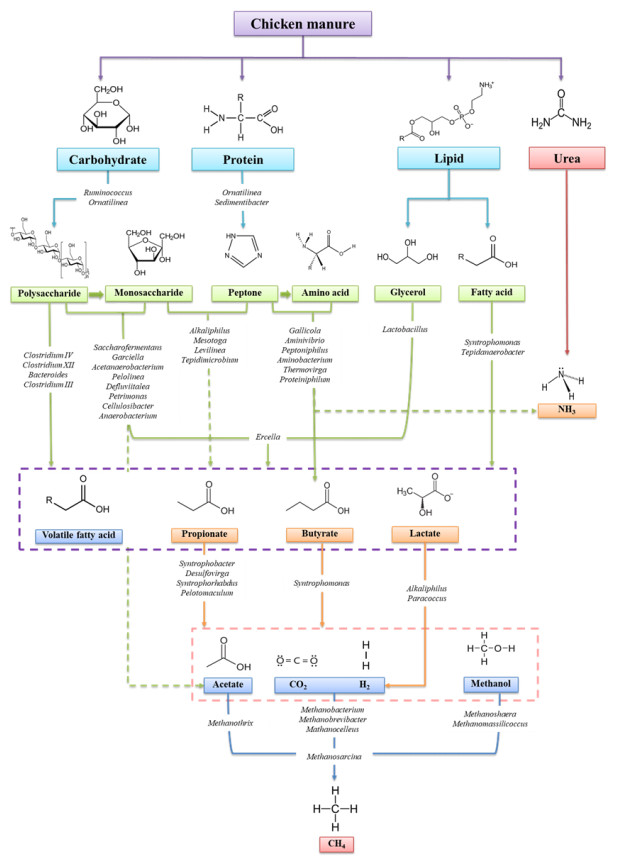|
[1]
|
Jiang Y, Yao Y, Liu H, et al. (2023) Volatile organic compounds conversion pathways and odor gas emission characteristics in chicken manure composting process. Front Ecol Evol 11: 1192132. https://doi.org/10.3389/fevo.2023.1192132 doi: 10.3389/fevo.2023.1192132

|
|
[2]
|
Aneja VP, Schlesinger WH, Erisman JW (2009) Effects of agriculture upon the air quality and climate: research, policy, and regulations. Environ Sci Technol 43: 4234–4240. https://doi.org/10.1021/es8024403 doi: 10.1021/es8024403

|
|
[3]
|
Casey KD, Bicudo JR, Schmidt DR, et al. (2006) Air quality and emissions from livestock and poultry production/waste management systems. ASABE: Washington, DC, USA. https://doi.org/10.13031/2013.20246
|
|
[4]
|
KA A, Benson O (2014) Poultry wastes management strategies and environmental implications on human health in Ogun state of Nigeria. Adv Econ Bus 2: 164–171. https://doi.org/10.13189/aeb.2014.020402 doi: 10.13189/aeb.2014.020402

|
|
[5]
|
Cao T, Zheng Y, Zhang Y, et al. (2022) Pilot study on gaseous pollution removal efficiency of acid scrubbing in a broiler house. Agric Ecosyst Environ 335: 108021. https://doi.org/10.1016/j.agee.2022.108021 doi: 10.1016/j.agee.2022.108021

|
|
[6]
|
Kalus K, Konkol D, Korczyński M, et al. (2020) Effect of biochar diet supplementation on chicken broilers performance, NH3 and odor emissions and meat consumer acceptance. Animals 10: 1539. https://doi.org/10.3390/ani10091539 doi: 10.3390/ani10091539

|
|
[7]
|
Cai L, Koziel JA, Liang Y, et al. (2007) Evaluation of zeolite for control of odorants emissions from simulated poultry manure storage. J Environ Qual 36: 184–193. https://doi.org/10.2134/jeq2006.0052 doi: 10.2134/jeq2006.0052

|
|
[8]
|
Hobbs P, Webb J, Mottram T, et al. (2004) Emissions of volatile organic compounds originating from UK livestock agriculture. J Sci Food Agric 84: 1414–1420. https://doi.org/10.1002/jsfa.1810 doi: 10.1002/jsfa.1810

|
|
[9]
|
Van der Heyden C, Demeyer P, Volcke EI (2015) Mitigating emissions from pig and poultry housing facilities through air scrubbers and biofilters: State-of-the-art and perspectives. Biosyst Eng 134: 74–93. https://doi.org/10.1016/j.biosystemseng.2015.04.002 doi: 10.1016/j.biosystemseng.2015.04.002

|
|
[10]
|
Yao Q (2017) Assessing the effectiveness of vegetative environmental buffers in mitigating poultry-emitted air pollutants. University of Maryland, College Park ProQuest Dissertations Publishing 2017: 10617007.
|
|
[11]
|
Konkol D, Popiela E, Skrzypczak D, et al. (2022) Recent innovations in various methods of harmful gases conversion and its mechanism in poultry farms. Environ Res 214: 113825. https://doi.org/10.1016/j.envres.2022.113825 doi: 10.1016/j.envres.2022.113825

|
|
[12]
|
Garner CE, Smith S, Elviss NC, et al. (2008) Identification of Campylobacter infection in chickens from volatile faecal emissions. Biomarkers 13: 413–421. https://doi.org/10.1080/13547500801966443 doi: 10.1080/13547500801966443

|
|
[13]
|
Jaturasitha S, Leangwunta V, Leotaragul A, et al. (2002) A comparative study of Thai native chicken and broiler on productive performance, carcass and meat quality. Proc Deutscher Tropentag 146:1–10.
|
|
[14]
|
Nahm K (2007) Feed formulations to reduce N excretion and ammonia emission from poultry manure. Bioresour Technol 98: 2282–2300. https://doi.org/10.1016/j.biortech.2006.07.039 doi: 10.1016/j.biortech.2006.07.039

|
|
[15]
|
Jaturasitha S, Chaiwang N, Kreuzer M (2016) Thai native chicken meat: An option to meet the demands for specific meat quality by certain groups of consumers; a review. Anim Prod Sci 57: 1582–1587. https://doi.org/10.1071/AN15646 doi: 10.1071/AN15646

|
|
[16]
|
Dal Bosco A, Mattioli S, Cartoni Mancinelli A, et al. (2021) Extensive rearing systems in poultry production: The right chicken for the right farming system. A review of twenty years of scientific research in Perugia University, Italy. Animals 11: 1281. https://doi.org/10.3390/ani11051281 doi: 10.3390/ani11051281

|
|
[17]
|
Wongrak K, Daş G, Moors E, et al. (2014) Establishment of gastro-intestinal helminth infections in free-range chickens: a longitudinal on farm study. Berl Münch Tierarztl Wochenschr 127: 305–313.
|
|
[18]
|
Castellini C, Berri C, Le Bihan-Duval E, et al. (2008) Qualitative attributes and consumer perception of organic and free-range poultry meat. Worlds Poult Sci J 64: 500–512. https://doi.org/10.1017/S0043933908000172 doi: 10.1017/S0043933908000172

|
|
[19]
|
Singh M, Cowieson A (2013) Range use and pasture consumption in free-range poultry production. Anim Prod Sci 53: 1202–1208. https://doi.org/10.1071/AN13199 doi: 10.1071/AN13199

|
|
[20]
|
Turan N, Akdemir A, Ergun O (2007) Emission of volatile organic compounds during composting of poultry litter. Water Air Soil Pollut 184: 177–182. https://doi.org./10.1007/s11270-007-9406-0 doi: 10.1007/s11270-007-9406-0

|
|
[21]
|
Abdullah A, Shukor S, Kamis M, et al. (2017) Calibration of an electronic nose for poultry farm. AIP Conf Proc 1808: No.1. https://doi.org/10.1063/1.4975235 doi: 10.1063/1.4975235

|
|
[22]
|
Rosentrater KA (2004) Laboratory analysis of an electrostatic dust collection system. Agric Eng Int: CIGR J 2: 3–17.
|
|
[23]
|
Mackie RI, Stroot PG, Varel VH (1998) Biochemical identification and biological origin of key odor components in livestock waste. J Anim Sci 76: 1331–1342. https://doi.org/10.2527/1998.7651331x doi: 10.2527/1998.7651331x

|
|
[24]
|
Gutarowska B, Matusiak K, Borowski S, et al. (2014) Removal of odorous compounds from poultry manure by microorganisms on perlite–bentonite carrier. J Environ Manage 141: 70–76. https://doi.org/10.1016/j.jenvman.2014.03.017 doi: 10.1016/j.jenvman.2014.03.017

|
|
[25]
|
Wuebbles DJ, Hayhoe K (2002) Atmospheric methane and global change. Earth-Sci Rev 57: 177–210. https://doi.org/10.1016/S0012-8252(01)00062-9 doi: 10.1016/S0012-8252(01)00062-9

|
|
[26]
|
Saunois M (2020) Supplement of the global methane budget 2000–2017. Earth Syst Sci Data 12: 1561–1623. https://doi.org/10.5194/essd-12-1561-2020 doi: 10.5194/essd-12-1561-2020

|
|
[27]
|
IPCC (2013) Climate change 2013: The physical science basis. Contribution of Working Group I to the Fifth Assessment Report of the Intergovernmental Panel on Climate Change, Cambridge University Press, UK and USA, 659–740.
|
|
[28]
|
Abouelenien F, Kitamura Y, Nishio N, et al. (2009) Dry anaerobic ammonia–methane production from chicken manure. Appl Microbiol Biotechnol 82: 757–764. https://doi.org/10.1007/s00253-009-1881-3 doi: 10.1007/s00253-009-1881-3

|
|
[29]
|
Thangarajan R, Bolan NS, Tian G, et al. (2013) Role of organic amendment application on greenhouse gas emission from soil. Sci Total Environ 465: 72–96. https://doi.org/10.1016/j.scitotenv.2013.01.031 doi: 10.1016/j.scitotenv.2013.01.031

|
|
[30]
|
Manogaran MD, Shamsuddin R, Yusoff MHM, et al. (2022) A review on treatment processes of chicken manure. Cleaner Circ Bioeconomy 2: 100013. https://doi.org/10.1016/j.clcb.2022.100013 doi: 10.1016/j.clcb.2022.100013

|
|
[31]
|
Ilea RC (2009) Intensive livestock farming: Global trends, increased environmental concerns, and ethical solutions. J Agric Environ Ethics 22: 153–167. https://doi.org/10.1007/s10806-008-9136-3 doi: 10.1007/s10806-008-9136-3

|
|
[32]
|
Gac A, Béline F, Bioteau T, et al. (2007) A French inventory of gaseous emissions (CH4, N2O, NH3) from livestock manure management using a mass-flow approach. Livest Sci 112: 252–260. https://doi.org/10.1016/j.livsci.2007.09.006 doi: 10.1016/j.livsci.2007.09.006

|
|
[33]
|
Carballa M, Regueiro L, Lema JM (2015) Microbial management of anaerobic digestion: Exploiting the microbiome-functionality nexus. Curr Opin Biotechnol 33: 103–111. https://doi.org/10.1016/j.copbio.2015.01.008 doi: 10.1016/j.copbio.2015.01.008

|
|
[34]
|
Li Y, Wang C, Xu X, et al. (2022) Bioaugmentation with a propionate-degrading methanogenic culture to improve methane production from chicken manure. Bioresour Technol 346: 126607. https://doi.org/10.1016/j.biortech.2021.126607 doi: 10.1016/j.biortech.2021.126607

|
|
[35]
|
Wadud S (2011) Understanding the microbial ecology of chicken litter in the context of odour production (Ph.D. thesis). University of New South Wales (UNSW) Sydney, Australia. https://doi.org/10.26190/unsworks/15136
|
|
[36]
|
Robertson A, Hoxey R, Demmers T, et al. (2002) Commercial-scale studies of the effect of broiler-protein intake on aerial pollutant emissions. Biosyst Eng 82: 217–225. https://doi.org/10.1006/bioe.2002.0073 doi: 10.1006/bioe.2002.0073

|
|
[37]
|
Jiang J, Sands J (2000) Odour and ammonia emission from broiler farms. A report for the Rural Industries Research and Development Corporation, RIRDC Publication No 00/2, Kingston, ACT, Australia.
|
|
[38]
|
Cross DE (2004) Phytochemical and enzyme supplementation of broiler chicken diets and the effects on intestinal microflora, nutrient utilisation and performance (Ph.D. thesis). University of Glasgow.
|
|
[39]
|
Lee KW, Everts H, Beynen A (2004) Essential oils in broiler nutrition. Int J Poult Sci 3: 738–752.
|
|
[40]
|
Senesi N, Loffredo E (1999) The chemistry of soil organic matter. Soil Phys Chem 2: 239–370.
|
|
[41]
|
Lichtfouse E (2000) Compound‐specific isotope analysis. Application to archaelogy, biomedical sciences, biosynthesis, environment, extraterrestrial chemistry, food science, forensic science, humic substances, microbiology, organic geochemistry, soil science and sport. Rapid Commun Mass Spectrom 14: 1337–1344. https://doi.org/10.1002/1097-0231(20000815)14:15<1337::AID-RCM9>3.0.CO;2-B doi: 10.1002/1097-0231(20000815)14:15<1337::AID-RCM9>3.0.CO;2-B

|
|
[42]
|
Chai F, Li P, Li L, et al. (2022) Dispersion, olfactory effect, and health risks of VOCs and odors in a rural domestic waste transfer station. Environ Res 209: 112879. https://doi.org/10.1016/j.envres.2022.112879 doi: 10.1016/j.envres.2022.112879

|
|
[43]
|
Skóra J, Matusiak K, Wojewódzki P, et al. (2016) Evaluation of microbiological and chemical contaminants in poultry farms. Int J Environ Res Public Health 13: 192. https://doi.org/10.3390/ijerph13020192 doi: 10.3390/ijerph13020192

|
|
[44]
|
Izat A, Tidwell N, Thomas R, et al. (1990) Effects of a buffered propionic acid in diets on the performance of broiler chickens and on microflora of the intestine and carcass. Poult Sci 69: 818–826. https://doi.org/10.3382/ps.0690818 doi: 10.3382/ps.0690818

|
|
[45]
|
Khan M, Mobin M, Abbas Z, et al. (2018) Fertilizers and their contaminants in soils, surface and groundwater. Encycl Anthropocene 5: 225–240. https://doi.org/10.1016/B978-0-12-809665-9.09888-8 doi: 10.1016/B978-0-12-809665-9.09888-8

|
|
[46]
|
Pyatt F (2003) Potential effects on human health of an ammonia rich atmospheric environment in an archaeologically important cave in southeast Asia. Occup Environ Med 60: 986–988. http://dx.doi.org/10.1136/oem.60.12.986 doi: 10.1136/oem.60.12.986

|
|
[47]
|
Oenema O, Oudendag D, Velthof GL (2007) Nutrient losses from manure management in the European Union. Livest Sci 112: 261–272. https://doi.org/10.1016/j.livsci.2007.09.007 doi: 10.1016/j.livsci.2007.09.007

|
|
[48]
|
Jiang J, Stevenson DS, Uwizeye A, et al. (2021) A climate-dependent global model of ammonia emissions from chicken farming. Biogeosciences 18: 135–158. https://doi.org/10.5194/bg-18-135-2021 doi: 10.5194/bg-18-135-2021

|
|
[49]
|
Naseem S, King AJ (2018) Ammonia production in poultry houses can affect health of humans, birds, and the environment—techniques for its reduction during poultry production. Environ Sci Pollut Res 25: 15269–15293. https://doi.org/10.1007/s11356-018-2018-y doi: 10.1007/s11356-018-2018-y

|
|
[50]
|
Al-Kerwi MSM, Mardenli O, Jasim MRM, et al. (2022) Effects of harmful gases emitted from poultry houses on productive and health performance. IOP Conf Ser: Earth Environ Sci 1060: 012082. https://doi.org/10.1088/1755-1315/1060/1/012082 doi: 10.1088/1755-1315/1060/1/012082

|
|
[51]
|
Bist RB, Subedi S, Chai L, et al. (2023) Ammonia emissions, impacts, and mitigation strategies for poultry production: A critical review. J Environ Manage 328: 116919. https://doi.org/10.1016/j.jenvman.2022.116919 doi: 10.1016/j.jenvman.2022.116919

|
|
[52]
|
Gržinić G, Piotrowicz-Cieślak A, Klimkowicz-Pawlas A, et al. (2023) Intensive poultry farming: A review of the impact on the environment and human health. Sci Total Environ 858: 160014. https://doi.org/10.1016/j.scitotenv.2022.160014 doi: 10.1016/j.scitotenv.2022.160014

|
|
[53]
|
Sazakli E, Leotsinidis M (2021) Odor nuisance and health risk assessment of VOC emissions from a rendering plant. Air Qual Atmos Health 14: 301–312. https://doi.org/10.1007/s11869-020-00935-2 doi: 10.1007/s11869-020-00935-2

|
|
[54]
|
Luo K, Pang Y, Yang Q, et al. (2019) A critical review of volatile fatty acids produced from waste activated sludge: Enhanced strategies and its applications. Environ Sci Pollut Res 26: 13984–13998. https://doi.org/10.1007/s11356-019-04798-8 doi: 10.1007/s11356-019-04798-8

|
|
[55]
|
Feng S, Ngo HH, Guo W, et al. (2022) Volatile fatty acids production from waste streams by anaerobic digestion: A critical review of the roles and application of enzymes. Bioresour Technol 359: 127420. https://doi.org/10.1016/j.biortech.2022.127420 doi: 10.1016/j.biortech.2022.127420

|
|
[56]
|
Dunlop MW (2011) Dust and odour emissions from meat chicken sheds. Australian Poultry CRC: Final Report, Project No: 04-45.
|
|
[57]
|
Saksrithai K, King A (2018) Controlling hydrogen sulfide emissions during poultry productions. J Anim Res Nutr 3: 2. https://doi.org/10.21767/2572-5459.100040 doi: 10.21767/2572-5459.100040

|
|
[58]
|
Nowak A, Matusiak K, Borowski S, et al. (2016) Cytotoxicity of odorous compounds from poultry manure. Int J Environ Res 13: 1046. https://doi.org/10.3390/ijerph13111046 doi: 10.3390/ijerph13111046

|
|
[59]
|
Calvo‐Flores FG, Dobado JA (2010) Lignin as renewable raw material. ChemSusChem 3: 1227–1235. https://doi.org/10.1002/cssc.201000157 doi: 10.1002/cssc.201000157

|
|
[60]
|
Tanaka N, Moriyama K, Ohtsu M, et al. (2019) Emissions of volatile organic compounds from a dairy cattle shed in Japan. Asian J Atmos 13: 171–185. https://doi.org/10.5572/ajae.2019.13.3.171 doi: 10.5572/ajae.2019.13.3.171

|
|
[61]
|
Nowak A, Bakuła T, Matusiak K, et al. (2017) Odorous compounds from poultry manure induce DNA damage, nuclear changes, and decrease cell membrane integrity in chicken liver hepatocellular carcinoma cells. Int J Environ Res 14: 933. https://doi.org/10.3390/ijerph14080933 doi: 10.3390/ijerph14080933

|
|
[62]
|
Spencer T (2013) Pastured poultry nutrition and forages. ATTRA (attra ncat org), 1–20.
|
|
[63]
|
Coetzee A (2018) What makes free range chicken "free": A case study of the free range chicken sector in the Western Cape (Ph.D. thesis). Stellenbosch: Stellenbosch University.
|
|
[64]
|
Campbell D, De Haas E, Lee C (2019) A review of environmental enrichment for laying hens during rearing in relation to their behavioral and physiological development. Poult Sci 98: 9–28. https://doi.org/10.3382/ps/pey319 doi: 10.3382/ps/pey319

|
|
[65]
|
Van Krimpen M, Leenstra F, Maurer V, et al. (2016) How to fulfill EU requirements to feed organic laying hens 100% organic ingredients. J Appl Poult Res 25: 129–138. https://doi.org/10.3382/japr/pfv048 doi: 10.3382/japr/pfv048

|
|
[66]
|
Kollenda E, Baldock D, Hiller N, et al. (2020) Transitioning towards cage-free farming in the EU: Assessment of environmental and socio-economic impacts of increased animal welfare standards. Policy report by the Institute for European Environmental Policy, Brussels & London, 1–65.
|
|
[67]
|
da Silva DCF, de Arruda AMV, Gonçalves AA (2017) Quality characteristics of broiler chicken meat from free-range and industrial poultry system for the consumers. J Food Sci Technol 54: 1818–1826. https://doi.org/10.1007/s13197-017-2612-x doi: 10.1007/s13197-017-2612-x

|
|
[68]
|
Miao Z, Glatz P, Ru Y (2005) Free-range poultry production—A review. Asian-Australas J Anim Sci 18: 113–132. https://doi.org/10.5713/ajas.2005.113 doi: 10.5713/ajas.2005.113

|
|
[69]
|
Fanatico A (2007) Specialty poultry production: Impact of alternative genotype, production system, and nutrition on performance, meat quality and sensory attributes of meat chickens for free range and organic markets (Ph.D. thesis). University of Arkansas, Fayetteville.
|
|
[70]
|
Poole TE (2007) Introduction to Developing a Free-Range Poultry Enterprise. University of Maryland, 1–24.
|
|
[71]
|
Mickelson T (2016) Free-Range Farming. Lerner Publications.
|
|
[72]
|
Harper GC, Makatouni A (2002) Consumer perception of organic food production and farm animal welfare. Br Food J 104: 287–299. https://doi.org/10.1108/00070700210425723 doi: 10.1108/00070700210425723

|
|
[73]
|
Crandall P, Seideman S, Ricke S, et al. (2009) Organic poultry: Consumer perceptions, opportunities, and regulatory issues. J Appl Poult Res 18: 795–802. https://doi.org/10.3382/japr.2009-00025 doi: 10.3382/japr.2009-00025

|
|
[74]
|
Miele M (2011) The taste of happiness: Free-range chicken. Environ Plan A 43: 2076–2090. https://doi.org/10.1068/a43257 doi: 10.1068/a43257

|
|
[75]
|
Rodriguez-Aurrekoetxea A, Estevez I (2016) Use of space and its impact on the welfare of laying hens in a commercial free-range system. Poult Sci 95: 2503–2513. https://doi.org/10.3382/ps/pew238 doi: 10.3382/ps/pew238

|
|
[76]
|
Van Horne P, Achterbosch T (2008) Animal welfare in poultry production systems: impact of EU standards on world trade. Worlds Poult Sci J 64: 40–52. https://doi.org/10.1017/S0043933907001705 doi: 10.1017/S0043933907001705

|
|
[77]
|
Karreman HJ, Fulwider W (2021) Animal well-being on organic farms. Improving animal welfare: A practical approach, 3Ed., 268–283.
|
|
[78]
|
Martínez-Pérez M, Sarmiento-Franco L, Santos-Ricalde R, et al. (2017) Poultry meat production in free-range systems: Perspectives for tropical areas. Worlds Poult Sci J 73: 309–320. https://doi.org/10.1017/S0043933917000034 doi: 10.1017/S0043933917000034

|
|
[79]
|
Sánchez-Casanova R, Sarmiento-Franco L, Phillips C, et al. (2020) Do free-range systems have potential to improve broiler welfare in the tropics? Worlds Poult Sci J 76: 34–48. https://doi.org/10.1080/00439339.2020.1707389 doi: 10.1080/00439339.2020.1707389

|
|
[80]
|
Young RJ (2013) Environmental enrichment for captive animals: John Wiley & Sons.
|
|
[81]
|
Taylor PS, Schrobback P, Verdon M, et al. (2023) An effective environmental enrichment framework for the continual improvement of production animal welfare. Anim Welf 32: e14. https://doi.org/10.1017/awf.2023.5 doi: 10.1017/awf.2023.5

|
|
[82]
|
Rocchi L, Paolotti L, Rosati A, et al. (2019) Assessing the sustainability of different poultry production systems: A multicriteria approach. J Clean Prod 211: 103–114. https://doi.org/10.1016/j.jclepro.2018.11.013 doi: 10.1016/j.jclepro.2018.11.013

|
|
[83]
|
Loreto F, Barta C, Brilli F, et al. (2006) On the induction of volatile organic compound emissions by plants as consequence of wounding or fluctuations of light and temperature. Plant Cell Environ 29: 1820–1828. https://doi.org/10.1111/j.1365-3040.2006.01561.x doi: 10.1111/j.1365-3040.2006.01561.x

|
|
[84]
|
Rutter SM (2006) Diet preference for grass and legumes in free-ranging domestic sheep and cattle: Current theory and future application. Appl Anim Behav Sci 97: 17–35. https://doi.org/10.1016/j.applanim.2005.11.016 doi: 10.1016/j.applanim.2005.11.016

|
|
[85]
|
Walker A, Gordon S (2003) Intake of nutrients from pasture by poultry Proc Nutr Soc 62: 253–256. https://doi.org/10.1079/PNS2002198 doi: 10.1079/PNS2002198

|
|
[86]
|
Lipiec A, Gruszecki T, Warda M, et al. (2015) Nutritional well-being of sheep under free-range grazing system on natural dry grasslands. Med Weter 71: 41–45.
|
|
[87]
|
Kirstine W, Galbally I, Ye Y, et al. (1998) Emissions of volatile organic compounds (primarily oxygenated species) from pasture. J Geophys Res Atmos 103: 10605–10619. https://doi.org/10.1029/97JD03753 doi: 10.1029/97JD03753

|
|
[88]
|
Kirstine W, Galbally I, Hooper M. (2002) Air pollution and the smell of cut grass. In: Conference proceedings: 16th International Clean Air & Environment Conference, Christchurch, New Zealand, Clean Air Society of Australia and New Zealand, 433–438.
|
|
[89]
|
Fall R, Karl T, Hansel A, et al. (1999) Volatile organic compounds emitted after leaf wounding: On-line analysis by proton-transfer-reaction mass spectrometry. J Geophys Res Atmos 104: 15963–15974. https://doi.org/10.1029/1999JD900144 doi: 10.1029/1999JD900144

|
|
[90]
|
Moran L, Aldezabal A, Aldai N, et al. (2019) Terpenoid traceability of commercial sheep cheeses produced in mountain and valley farms: From pasture to mature cheeses. Food Res Int 126: 108669. https://doi.org/10.1016/j.foodres.2019.108669 doi: 10.1016/j.foodres.2019.108669

|
|
[91]
|
Abd-ElGawad AM, El Gendy AE-NG, Assaeed AM, et al. (2021) Phytotoxic effects of plant essential oils: A systematic review and structure-activity relationship based on chemometric analyses. Plants 10: 36. https://doi.org/10.3390/plants10010036 doi: 10.3390/plants10010036

|
|
[92]
|
Kilcawley KN, Faulkner H, Clarke HJ, et al. (2018) Factors influencing the flavour of bovine milk and cheese from grass based versus non-grass based milk production systems. Foods 7: 37. https://doi.org/10.3390/foods7030037 doi: 10.3390/foods7030037

|
|
[93]
|
Srikamwang C, Onsa NE, Sunanta P, et al. (2023) Role of microbial volatile organic compounds in promoting plant growth and disease resistance in horticultural production. Plant Signal Behav 2023: 2227440. https://doi.org/10.1080/15592324.2023.2227440 doi: 10.1080/15592324.2023.2227440

|
|
[94]
|
Guimarães GS, Rondina ABL, Santos MS, et al. (2022) Pointing out opportunities to increase grassland pastures productivity via microbial inoculants: Attending the society's demands for meat production with sustainability. Agronomy 12: 1748. https://doi.org/10.3390/agronomy12081748 doi: 10.3390/agronomy12081748

|
|
[95]
|
Richardson AE, Simpson RJ (2011) Soil microorganisms mediating phosphorus availability update on microbial phosphorus. Plant Physiol 156: 989–996. https://doi.org/10.1104/pp.111.175448 doi: 10.1104/pp.111.175448

|
|
[96]
|
Sahur A (2015) The interaction between Endophytic actinomycetes and Rhizobium in Leguminous plants. J Trop Crop Sci 2: 29–34. https://doi.org/10.29244/jtcs.2.3.29-34 doi: 10.29244/jtcs.2.3.29-34

|
|
[97]
|
Bentley R, Chasteen TG (2004) Environmental VOSCs––formation and degradation of dimethyl sulfide, methanethiol and related materials. Chemosphere 55: 291–317. https://doi.org/10.1016/j.chemosphere.2003.12.017 doi: 10.1016/j.chemosphere.2003.12.017

|
|
[98]
|
Smet E, Lens P, Langenhove HV (1998) Treatment of waste gases contaminated with odorous sulfur compounds. Crit Rev Environ Sci Technol 28: 89–117. https://doi.org/10.1080/10643389891254179 doi: 10.1080/10643389891254179

|
|
[99]
|
Wang D, Rosen C, Kinkel L, et al. (2009) Production of methyl sulfide and dimethyl disulfide from soil-incorporated plant material and implications for controlling soilborne pathogens. Plant Soil 324: 185–197. https://doi.org/10.1007/s11104-009-9943-y doi: 10.1007/s11104-009-9943-y

|
|
[100]
|
Smith A (1976) Ethylene in soil biology. Annu Rev Phytopathol 14: 53–73.
|
|
[101]
|
Adams WA, Akhtar N (1994) The possible consequences for herbage growth of waterlogging compacted pasture soils. Plant Soil 162: 1–17. https://doi.org/10.1007/BF01416085 doi: 10.1007/BF01416085

|
|
[102]
|
Shibata M, Terada F (2010) Factors affecting methane production and mitigation in ruminants. Animal Anim Sci J 81: 2–10. https://doi.org/10.1111/j.1740-0929.2009.00687.x doi: 10.1111/j.1740-0929.2009.00687.x

|
|
[103]
|
Moss A (1994) Methane production by ruminants-Literature review of Ⅰ. Dietary manipulation to reduce methane production and Ⅱ. Laboratory procedures for estimating methane potential of diets. Nutr Abstr Rev (Series B) 64: 786–806.
|
|
[104]
|
Taylor R, Omed H, Edwards-Jones G (2014) The greenhouse emissions footprint of free-range eggs. Poult Sci 93: 231–237. https://doi.org/10.3382/ps.2013-03489 doi: 10.3382/ps.2013-03489

|
|
[105]
|
Gutiérrez-del-Río I, Fernández J, Lombó F (2018) Plant nutraceuticals as antimicrobial agents in food preservation: Terpenoids, polyphenols and thiols. Int J Antimicrob Agents 52: 309–315. https://doi.org/10.1016/j.ijantimicag.2018.04.024 doi: 10.1016/j.ijantimicag.2018.04.024

|
|
[106]
|
Insam H, Seewald MS (2010) Volatile organic compounds (VOCs) in soils. Biol Fertil Soils 46: 199–213. https://doi.org/10.1007/s00374-010-0442-3 doi: 10.1007/s00374-010-0442-3

|
|
[107]
|
Kusstatscher P, Cernava T, Berg G (2020) Using bacteria-derived volatile organic compounds (VOCs) for industrial processes. Bacterial Volatile Compounds as Mediators of Airborne Interactions, 305–316. https://doi.org/10.1007/978-981-15-7293-7_13 doi: 10.1007/978-981-15-7293-7_13

|
|
[108]
|
Seedorf J (2018) Controlling the internal concentrations of gases and odor within and emissions from animal buildings. Air Quality and Livestock Farming, CRC Press, 227–264.
|
|
[109]
|
Preis S, Klauson D, Gregor A (2013) Potential of electric discharge plasma methods in abatement of volatile organic compounds originating from the food industry. J Environ Manage 114: 125–138. https://doi.org/10.1016/j.jenvman.2012.10.042 doi: 10.1016/j.jenvman.2012.10.042

|
|
[110]
|
Wu S, Wang Q, Fang M, et al. (2023) Hydrothermal carbonization of food waste for sustainable biofuel production: Advancements, challenges, and future prospects. Sci Total Environ 897: 165327. https://doi.org/10.1016/j.scitotenv.2023.165327 doi: 10.1016/j.scitotenv.2023.165327

|
|
[111]
|
Rios C, Panini R, Menezes LA, et al. (2021) Effects of the substitution of fishmeal with mealworm meal on enzymes, haemolymph and intestinal microbiota of the Pacific white shrimp. J Insects Food Feed 7: 1023–1033.
|
|
[112]
|
Hamid A, Ahmad A, Khan N (2018) Respiratory and other health risks among poultry-farm workers and evaluation of management practices in poultry farms. Braz J Poult Sci 20: 111–118. https://doi.org/10.1590/1806-9061-2017-0513 doi: 10.1590/1806-9061-2017-0513

|
|
[113]
|
Yao Q, Torrents A, Li H, et al. (2018) Using a vegetative environmental buffer to reduce the concentrations of volatile organic compounds in poultry-house atmospheric emissions. J Agric Food Chem 66: 8231–8236. https://doi.org/10.1021/acs.jafc.8b00088 doi: 10.1021/acs.jafc.8b00088

|
|
[114]
|
McGahan E, Gould N, Dunlop MW (2021) Best practice litter management manual for Australian meat chicken farms: Covering fresh, in-shed, reuse and spent litter management. AgriFutures Australia Project No. PRJ-011589.
|
|
[115]
|
Edwards LE, Hemsworth PH (2021) The impact of management, husbandry and stockperson decisions on the welfare of laying hens in Australia. Anim Prod Sci 61: 944–967. https://doi.org/10.1071/AN19664 doi: 10.1071/AN19664

|
|
[116]
|
Koerkamp PG (1994) Review on emissions of ammonia from housing systems for laying hens in relation to sources, processes, building design and manure handling. J Agric Eng Res 59: 73–87. https://doi.org/10.1006/jaer.1994.1065 doi: 10.1006/jaer.1994.1065

|
|
[117]
|
Fangueiro D, Alvarenga P, Fragoso R (2021) Horticulture and orchards as new markets for manure valorisation with less environmental impacts. Sustainability 13: 1436. https://doi.org/10.3390/su13031436 doi: 10.3390/su13031436

|
|
[118]
|
Feilberg A, Sommer SG (2013) Ammonia and malodorous gases: sources and abatement technologies. In: Sommer SG, Christensen ML, Schmidt T, et al. (Eds.), Animal Manure Recycling: Treatment and Management, 153–175. https://doi.org/10.1002/9781118676677.ch9
|









 DownLoad:
DownLoad:
